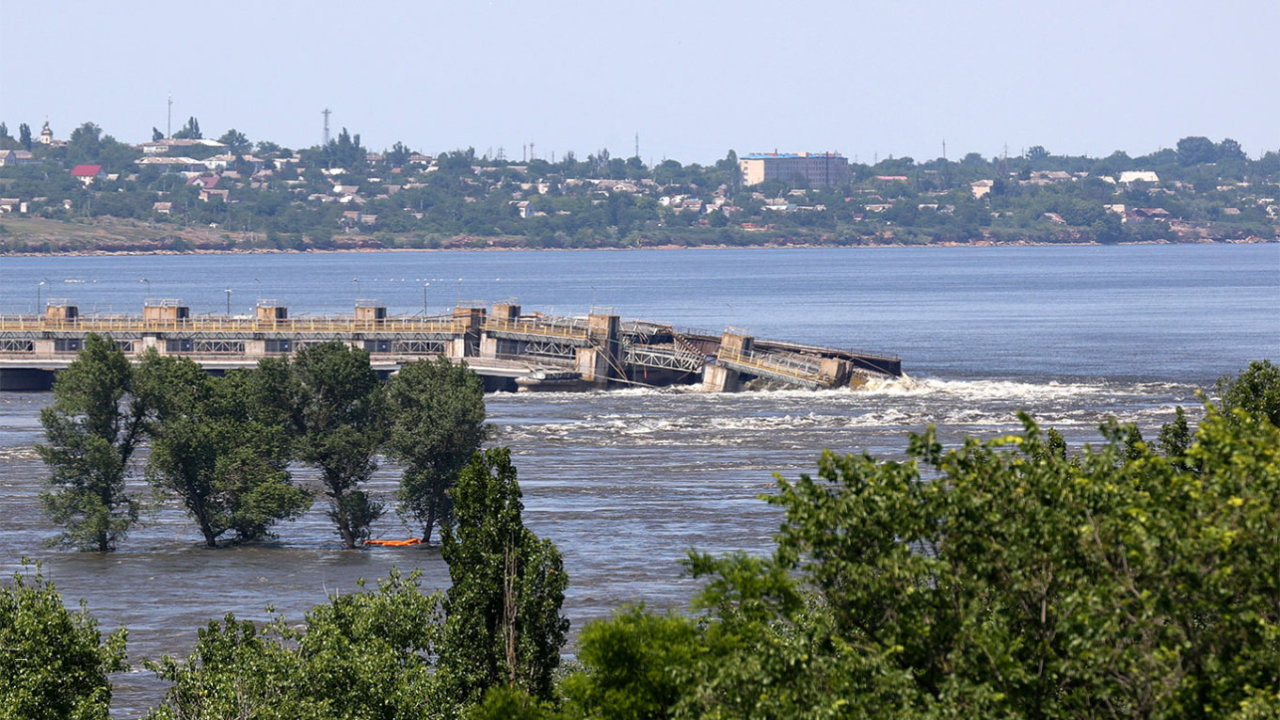Kakhovka Dam
A significant event has unfolded in southern Ukraine, where the Kakhovka Dam on the Dnipro River, separating Russian and Ukrainian forces, was breached.
The Dnipro River and the Construction of the Dam
Situated on the banks of the Dnipro River, the dam in question was constructed in 1956 during the Soviet era. This engineering marvel stands at an impressive height of 30 meters (98 feet) and spans a length of 3.2 kilometers (2 miles). Its primary purpose was to support the Kakhovka hydroelectric power plant and harness the river’s energy potential.
Reservoir and Water Supply
The dam forms a vast reservoir with a volume of 18 km3. It serves as a critical water source for two significant entities. Firstly, the reservoir supplies water to the Crimean peninsula, a region that Russia controversially claims to have annexed in 2014. Secondly, it caters to the water needs of the Zaporizhzhia nuclear plant, which is currently under Russian control. Both of these depend heavily on the stability and functionality of the dam.
Conflicting Accounts of Destruction
In the aftermath of the breach, conflicting narratives emerged regarding the cause of the dam’s destruction. Ukraine promptly blamed Russia, accusing Russian terrorists of intentionally demolishing the Kakhovka hydroelectric power plant dam. Conversely, some Russian-installed officials attributed the damage to Ukrainian shelling, specifically targeting the hydraulic valves. Others claimed that the dam collapsed due to pre-existing damage and the immense pressure of the water.
Human Impact and Risk of Flooding
The breach of the dam has raised concerns about the potential human impact and the risk of flooding. Approximately 22,000 individuals residing in Ukraine’s southern Kherson region face the immediate threat of flooding. Russian-installed officials have warned residents to be prepared for evacuation. Additionally, Ukrainian Prime Minister Denys Shmyhal expressed concern that up to 80 settlements could be at risk of flooding.
Reassurances from Energy Companies
The Zaporizhzhia Nuclear Power Plant, Europe’s largest, relies on the reservoir for its cooling water supply. Despite the breach, the International Atomic Energy Agency (IAEA) assured the public that there is no immediate nuclear safety risk at the plant. Furthermore, Russia’s state nuclear energy company, Rosatom, explicitly stated that the Moscow-controlled nuclear plant is not under threat.
Month: Current Affairs - June, 2023
Category: International / World Current Affairs


